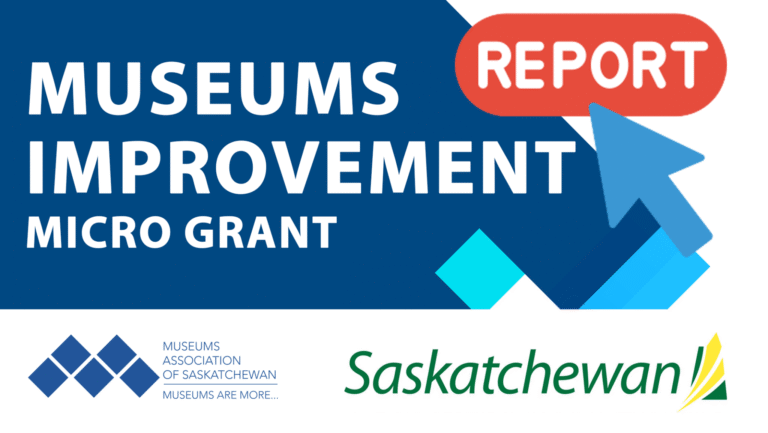Assistant Curator – Wanuskewin Heritage Park
Are you an emerging Indigenous museum professional ready to help share stories that have lived on this land since time immemorial? Wanuskewin Heritage Park invites you to step into a
Hibernation – Putting your Seasonal Museum “To Bed” for the Winter
By Kathleen Watkin, MAS Museum Advisor
With the end of the tourist season upon us, and the cold weather on its way, it is time for many seasonal museums to close their doors for the winter. This process can be overwhelming, so here are some Tips, Hints and Self-Assessment Questions to make the transition easier.
Security
Inspect the Property
Any major problems should be addressed as soon as possible to ensure the problem and its consequences do not escalate over the winter season.
Clean Gutters and Maintain Water Dispersion
Ensure that all gutters and downspouts are completely cleaned out.
If your downspout feeds out close to your museum, consider adding tubing to the ends, so that water is released further away from your foundation.
Turning Off and Draining Water Lines
To Heat or Not to Heat?
Prepare for Snow Removal
Cleaning and Assessment
Protect Against Pests (See CCI Notes for more information: http://canada.pch.gc.ca/eng/1439925167385)
Preparing for Water
Light Exposure
Once the Museum is “Put to Bed” for the Season:
For more information:
Heritage Preservation and National Park Service. “Caring for Your Historic House.” Harry N. Abrams, Inc. New York: 1998.
Mary Peever Ethnology Laboratory. “Closing a Museum for the Winter.” CCI Note 1/3. Canadian Conservation Institute. 1988. Website: http://canada.pch.gc.ca/eng/1439925169964
New England Museum Association (NEMA). “Hibernation Note Just of Bears.” Webinar. Connecting to Collections Care Online Community. August 31, 2016. Website: http://www.connectingtocollections.org/hibernation-not-just-for-bears-putting-your-house-museum-to-bed-for-the-season/
“Winterizing Your Historic Building.” Conservation Center for Art & Historical Artifacts. 2016. Website: http://www.ccaha.org/uploads/media_items/winterizing-historic-buildings.original.pdf
Are you an emerging Indigenous museum professional ready to help share stories that have lived on this land since time immemorial? Wanuskewin Heritage Park invites you to step into a

Usual office hours will resume on January 5th, 2026

Just a reminder that the Final Report for the Museum Improvement Micro Grant for Community Museums is due December 5th! Your final report will require you to provide a brief